Storytelling in the digital age: some essentials endure
TAKEAWAY: So much is said today about the rise of multimedia storytelling. We are all excited about it, of course. For storytellers, it represents about the most complete way of telling stories that one can imagine. What constitutes good multimedia storytelling?
Rarely a week goes by that I will not be involved in a workshop dealing with multimedia storytelling, a process that involves both the philosophical (what stories are made to be told in a multimedia way) to the hands on (come prepared with a story idea and we will flesh it out as a multimedia presentation).
Yet, as we discuss multimedia storytelling, one thought always comes to mind for me: while the technology of today, and the popular digital platforms offer a new realm of possibilities, the two basic questions at the start of the process are still the same as they were decades ago (and especially when informational graphics became a standard storytelling technique for newspapers and magazines):
1. What is the story about?
2. What is the best way to tell the story?
What has changed, in addition to the technology, is how multimedia storytelling is planned and carried out.
At many newspapers, we begin to see “producers”, who work closely with editors, writers and designers in making the multimedia aspects of the story possible.
In a recent piece about multimedia storytelling, Nancy Donaldson, a senior producer for The New York Times (which has become the frontrunner in terms of producing fabulous multimedia stories), said that at the Times they tried to play to the strengths of each medium to create a seamless experience for users.
“We approach each project looking at the story first, and then decide the medium. That decision is made in the beginning.”
Multimedia storytelling: progress in sight
While multimedia storytelling is still in its infancy, I am happy to say that I see a greater awareness for the dynamics of how to plan and to execute multimedia stories. Editors and writers are well aware that the story comes first, then the decision for how it will play on different platforms, or on which platforms.
Too many newsrooms continue to plan most of what they do for print, however, and that is one area that needs work.
How do we deal with this trend?
A lot of what I do today is training workshops to take people to multimedia storytelling. It is satisfying, because it is all about the story. First rule: don’t come into the room with the story already WRITTEN. The idea is to brainstorm the story idea, then see how it fits into various platforms, and genres: listening, watching, reading, engaging. With my clients I create an environment that is both a little “university classroom” and “hands on workshop”, with both philosophical and practical discussions.
Biggest challenge on the way to multimedia storytelling
Changing the mentality of editors is definitely the most difficult part of training teams for multimedia storytelling.
Usually the technology is in place, the mentality is not. Editors still come to the newsroom to produce a print product. But progress is taking place.
What constitutes a good multimedia piece?
It all begins with a good story (that has not changed since I first became a journalist in the late 60s). A good piece has a great story to tell, engages the senses, engages the brain, leaves you wanting more.
Engaging the reader is of utmost importance: The days of the active journalist/passive reader are over. Now engagement is the key, it is essential. Those producing a multimedia piece must be sure to engage all the senses. The reader wants to hear the sounds of the story, to engage with the subject, to read the words, to watch photos and videos. Each contributes texture to the story.
That word, texture, is what it is all about. Multimedia means multi texture, multi genre, multi sense engagement.
Multimedia storytelling strategies: The New York Times

Snowfall:a pioneering effort in multimedia storytelling for the Times; http://www.nytimes.com/projects/2012/snow-fall/

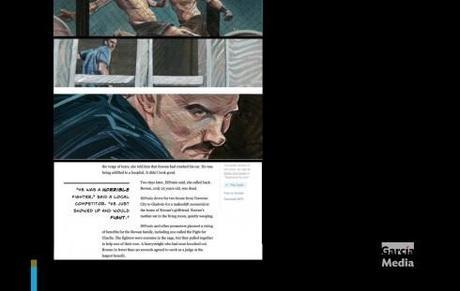
Tomato Can Blues: a wonderful story, spectacularly illustrated, with special effects that mesmerized; http://www.nytimes.com/projects/2013/tomato-can-blues/
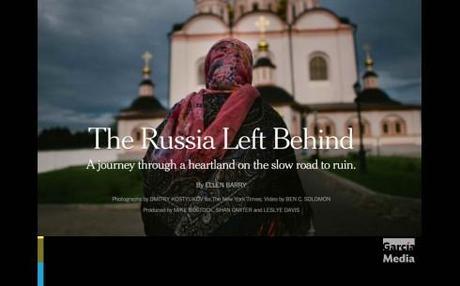
The Russia Left Behind: photo sets the scene; http://www.nytimes.com/newsgraphics/2013/10/13/russia/
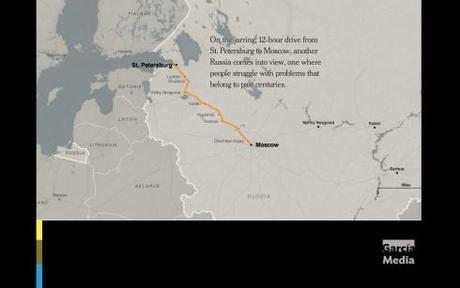
Summary tells us what the story is about: a 12-hour journey through parts of Russia that are not well known
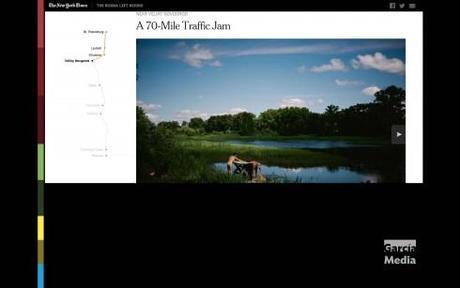

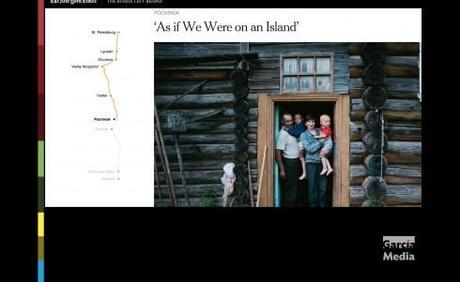
The Russia left Behind: segmenting of the narrative facilitates reading and multimedia secondary elements
Recently, The New York Times published The Russia Left Behind, a train journey through parts of Russia that seldom make it into the news.
We see major progress since the Times’ pioneering effort in multimedia storytelling, with the now iconic Snowfall, where it all began.
If we analyze this new entry, The Russia Left Behind, we see a pattern:
a. An image (photo or video) that sets the mood.
b. Words in which the writer tells us what the story is about.
c. Segmentation of the narrative, to allow for better use of audio and video that corresponds with a specific segment of the story and is placed near that part of the narrative.
Our previous blog posts on multimedia storytelling:
Multimedia stories: beyond the dazzle dazzle
http://garciamedia.com/blog/articles/pmulti_media_stories_beyond_the_razzle_dazzle_p
The happy evolution of those multimedia story packages
http://garciamedia.com/blog/articles/pthe_happy_evolution_of_those_multimedia_story_packages_p

